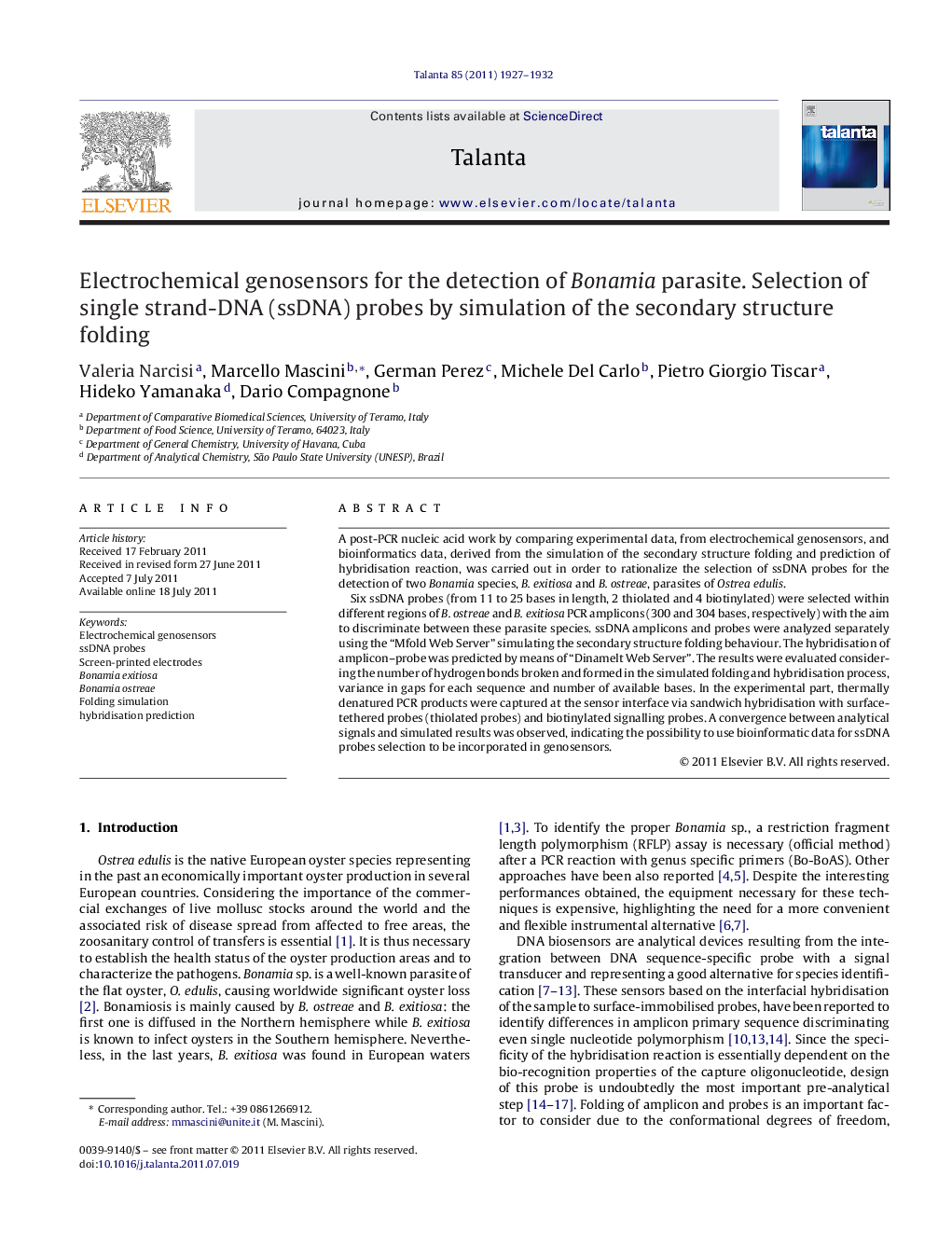| Article ID | Journal | Published Year | Pages | File Type |
|---|---|---|---|---|
| 10559479 | Talanta | 2011 | 6 Pages |
Abstract
Six ssDNA probes (from 11 to 25 bases in length, 2 thiolated and 4 biotinylated) were selected within different regions of B. ostreae and B. exitiosa PCR amplicons (300 and 304 bases, respectively) with the aim to discriminate between these parasite species. ssDNA amplicons and probes were analyzed separately using the “Mfold Web Server” simulating the secondary structure folding behaviour. The hybridisation of amplicon-probe was predicted by means of “Dinamelt Web Server”. The results were evaluated considering the number of hydrogen bonds broken and formed in the simulated folding and hybridisation process, variance in gaps for each sequence and number of available bases. In the experimental part, thermally denatured PCR products were captured at the sensor interface via sandwich hybridisation with surface-tethered probes (thiolated probes) and biotinylated signalling probes. A convergence between analytical signals and simulated results was observed, indicating the possibility to use bioinformatic data for ssDNA probes selection to be incorporated in genosensors.
Related Topics
Physical Sciences and Engineering
Chemistry
Analytical Chemistry
Authors
Valeria Narcisi, Marcello Mascini, German Perez, Michele Del Carlo, Pietro Giorgio Tiscar, Hideko Yamanaka, Dario Compagnone,
